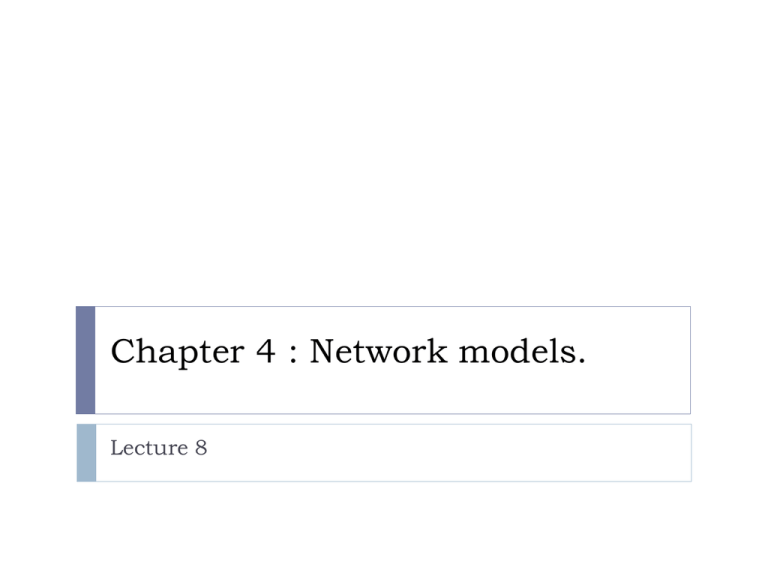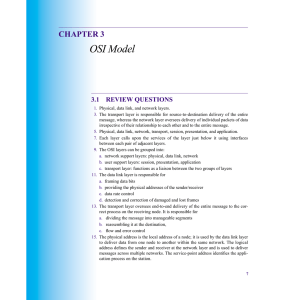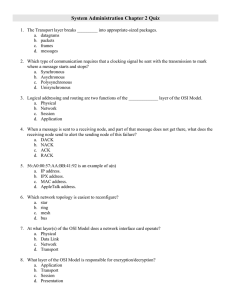Chapter 4 : Network models. Lecture 8
advertisement

Chapter 4 : Network models. Lecture 8 Layered Tasks - We use the concept of layers in our daily life. As an example, let us consider 2 friends who communicate through postal mail. The process of sending a letter to a friend would be complex if there were no services available from the post office. Process of sending a letter: - Sender, Receiver, and Carrier. - Hierarchy : Tasks must be done in order given in hierarchy - Services : each layer at the sending site uses the services of the layer below it. Tasks involved in sending a letter: Network model - In order for a computer to send information to another computer, and for that computer to receive and understand the information, there has to exist a set of rules or standards for this communication process. These standards ensure that varying devices and products can communicate with each other over any network. This set of standards is called a Network model. Network model - A network model is a layered architecture. Layers : - A grouping of related tasks involving the transfer of information . Protocol : - A set of rules that governs data communication. It represents an agreement between the communicating devices. The OSI Model - Established in 1947, the International Standards Organization (ISO) is a multinational body dedicated to worldwide agreement on international standards. An ISO standard that covers all aspects of network communications is the Open Systems Interconnection (OSI) model. It was first introduced in the late 1970s. The OSI Model It consists of seven separate but related layers, each of which defines a part of the process of moving information across a network. Layers Architecture - The OSI model is composed of seven ordered layers: physical (layer 1), data link (layer 2), network (layer 3), transport (layer 4), session (layer 5), presentation (layer 6), and application (layer 7). Layers Architecture - The figure shows the layers involved when a message is sent from device A to device B. - Within a single machine, each layer calls upon the services of the layer just below it. - Between machines, layer x on one machine communicates with layer x on another machine. - This communication is governed by an agreed-upon series of rules and conventions called protocols. The interaction between layers in the OSI model An exchange using the OSI model - In This figure, which gives an overall view of the OSI layers, D7 means the data unit at layer 7, D6 means the data unit at layer 6, and so on. The process starts at layer 7 (the application layer), then moves from layer to layer in descending, sequential order. At each layer, a header, or possibly a trailer, can be added to the data unit. - Commonly, the trailer is added only at layer 2. When the formatted data unit passes through the physical layer (layer 1), it is changed into an electromagnetic signal and transported along a physical link. An exchange using the OSI model - Upon reaching its destination, the signal passes into layer 1 and is transformed back into digital form. - The data units then move back up through the OSI layers. As each block of data reaches the next higher layer, the headers and trailers attached to it at the corresponding sending layer are removed, and actions appropriate to that layer are taken. - By the time it reaches layer 7, the message is again in a form appropriate to the application and is made available to the recipient. An exchange using the OSI model Encapsulation A packet (header and data) at level 7 is encapsulated in a packet at level 6. The whole packet at level 6 is encapsulated in a packet at level 5, and so on.




